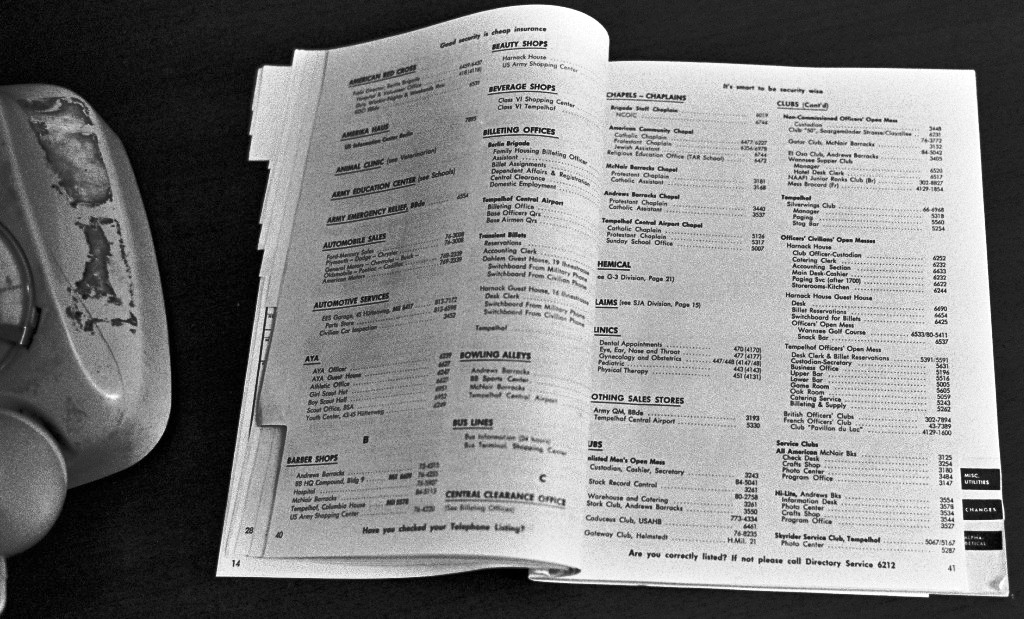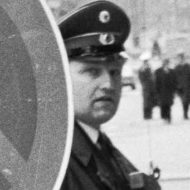Part Three – They Studied the Tower In Detail
Lt. Col. Maennchen and his colleagues studied the Fernmeldeturm in detail, accounting for each of the Operations floors (28 through 34, 105 meters to 131 meters above the Schaeferberg) and each of the antennas up to the television antenna at the top. A site plan of ground level — out to the bus stop on Koenigstrasse — was drawn up, accompanying a vertical profile drawing showing antenna arrays. They learned from West Berlin news clippings, radio frequency allocations that had to be coordinated with international bodies, technical journals and sources within Landespost Berlin.
In a 1970 report from the “Frequency Bureau” of the GDR Post and Telecommunications Ministry — provided to the MfS under the rubber stamp “Geheime Verschlusssache” (Secret Classified Document) — the scope of all the “Radio Bridges” between West Berlin and the FRG was laid out. In total, there were seven operated for civilian traffic by the Bundespost FRG / Landespost Berlin, two operated by the U.S. military and one operated by the French military.
The radio bridges anchored at the Fernmeldeturm were listed then as:
+ Hoebeck – Schaeferberg = Television networks and program exchanges.
+ Hoebeck – Schaeferberg = 1200 voice circuits (240 kept in ready reserve), equipped with frequency-shifting for security.
+ Torfhaus – Schaeferberg = an older set of antennas that predated the Fernmeldeturm carried 480 voice circuits, also equipped with frequency-shifting for security.
+ Torfhaus – Schaeferberg = 1920 voice circuits (1320 kept in ready reserve, or as back-up for television networks).
+ Torfhaus – Schaeferberg = an unknown link using three frequencies, possibly with a military purpose.
By 1970, the study led by Lt. Colonel Maennchen had turned into Abteilung III (Section 3) and Abteilung F (Radio counter-intelligence section). Together, in 1971, their staff numbered 892. At that point, there were still other sections responsible for monitoring wire communications.
Readers might ask why the effort? In their 2001/2008 book Headquarters Germany, former analysts Klaus Eichner and Andreas Dobbert of Abteilung IX (MfS Counter-intelligence) explain. [One cannot escape the voice of Conrad Veidt as Major Strasser in Casablanca while reading the Stasi academics’ well-documented book. “Renault: But everybody’s having such a good time. Strasser: Yes. Much too good a time. The place is to be closed.”]
They received information that was gathered from sources including electronic intercepts from what had become Hauptabteilung III (HA III). It was not a perfect relationship.
Operational and technical measures played a major role in obtaining internal information from the opponent’s intelligence services. Talkativeness. Discipline violations and confidence of staff and heads of enemy intelligence services helped us. Useful for us were also the seemingly boundless confidence in the performance of their own technology and underestimating the technical abilities and possibilities of the eastern intelligence agencies. Our partners in the technical investigations of the Department III (HA III) supported us in the quantitative and qualitative development of the information volumes about special areas of Western intelligence agencies. To promote the development, we put to them all utilizable information on the communication lines of interest to us: objects that may have technical equipment, special security measures and the like.
In recent years we had with the evaluators of the HA III relatively regular training seminars in order to provide them with the necessary knowledge. We took advantage of the opportunity of target testing – the HA III received from us specific guidelines which employees, objects, or communication lines should be selected as a priority. However, we did not achieve in the field of “non-German” intelligence services as much success as expected. In addition to technical difficulties – in particular through the digitization of nets – probably the language skills of the evaluators in the HA III had limitations. Our relations remained bureaucratic and narrow-mindedness was also not spared. “To conceal the sources of their information – which sources tapped well to the Department that bugged the phones? – they painted [redacted] all of the dialogues, which they thought could identify the interlocutor. This is called Conspiracy. The result was an obscure word salad, with which we could not do anything. We had to intervene several times in the line (HA III leadership), until we finally got the unmutilated recordings delivered.

